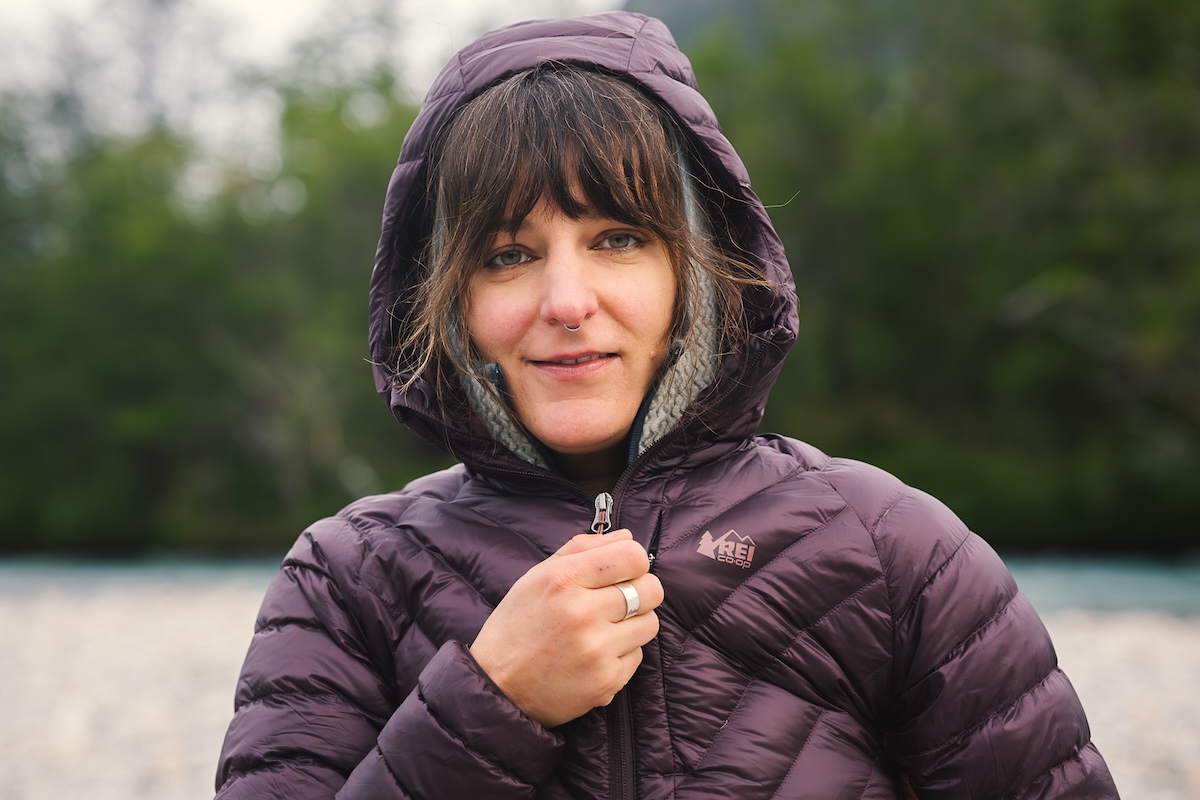
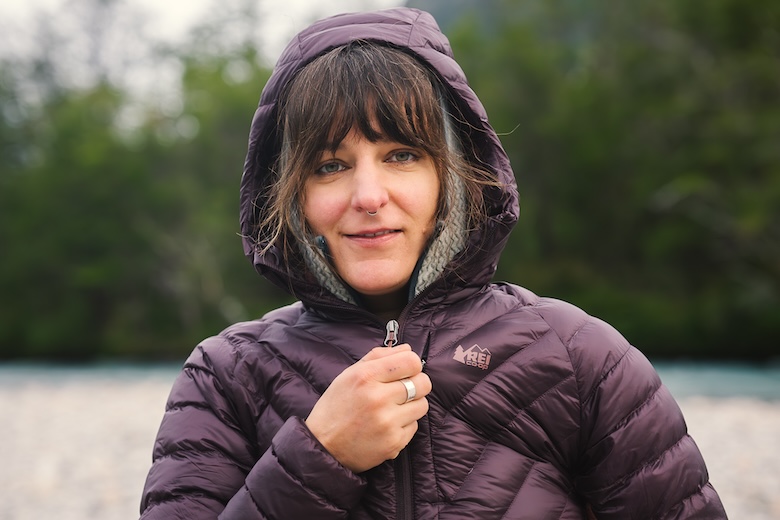
A down jacket is a wonderful insulating piece: It’s light, packable, and offers premium comfort that's rare in a synthetic equivalent. In choosing your perfect puffy, you'll have to decide whether to go with a hood or no hood. Nearly every down jacket is offered in both forms, so which should you choose? Below we offer our considerations on hooded and non-hooded jackets, including warmth, intended use, weight and cost, and more. Once you have an idea of which style is best for you, be sure to check out our unisex guide to the best down jackets, as well as our lineup of the best women's down jackets.
Editor's note: This article was updated on August 27, 2025, to revise outdated product information.
Let’s start by looking at what you’re getting with a hood: extra insulation. Not only is a hood warmer than a hat, it also has wonderful heating efficiency. By covering both your head and your neck, there are fewer places for cold to sneak through than what you’d experience with a beanie or other dome-insulating combination. The weight difference between is negligible, but a down hood will pack down smaller, and you don’t have to worry about losing an extra piece of clothing. If ultimate warmth and convenience are what you’re after, a hooded down jacket is an excellent choice.
It’s easy to assume that a hood will also help protect from rain and snow, but wet weather is not where a down hood excels. Whereas rain jackets and hardshells are made with waterproof materials, down jackets are not waterproof (and even worse, they lose their ability to insulate when wet). Light precipitation can be OK, especially in the form of dry snow, and many down jackets feature a durable water repellent (DWR) coating that helps to slough off moisture. But it’s important to remember that prolonged periods of rain or heavy snow hitting the jacket directly will end up soaking through quickly. For this reason, we consider a down jacket hood to be ideal for staying warm but not a good line of defense in wet weather unless you're layering it underneath something else, like a ski jacket.
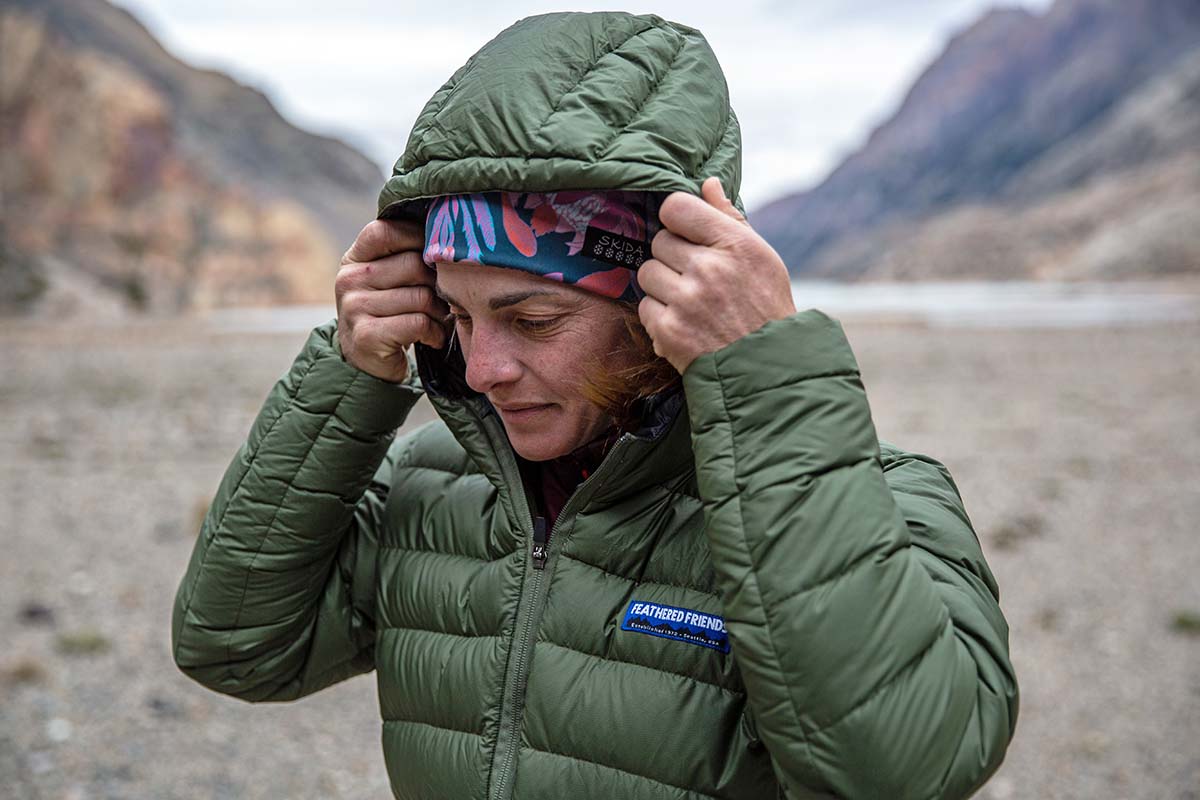
Hoods are extremely popular for backcountry endeavors like backpacking and rock climbing, and you’ll see them being used more often than not, particularly in frigid temperatures, during downtimes on the trail, or at the crag. It’s easy to pull a hood up over your head for extra warmth and wind resistance while belaying your climbing partner, and hoods rarely get in the way of movement (and only have a small impact on peripheral vision). Hoods are extremely cozy when you’re high on a summit or standing around the campfire at night after a long day on the trail. Even day hikers will appreciate the warmth of a hooded down jacket when stopping for lunch or crossing a high mountain pass. A couple of our go-to hooded down jackets for these uses are the Patagonia Down Sweater Hoody and Arc'teryx Cerium Hoody, both of which hit an excellent balance of warmth, comfort, and performance (for a full list of our favorites, see our article on the best down jackets).
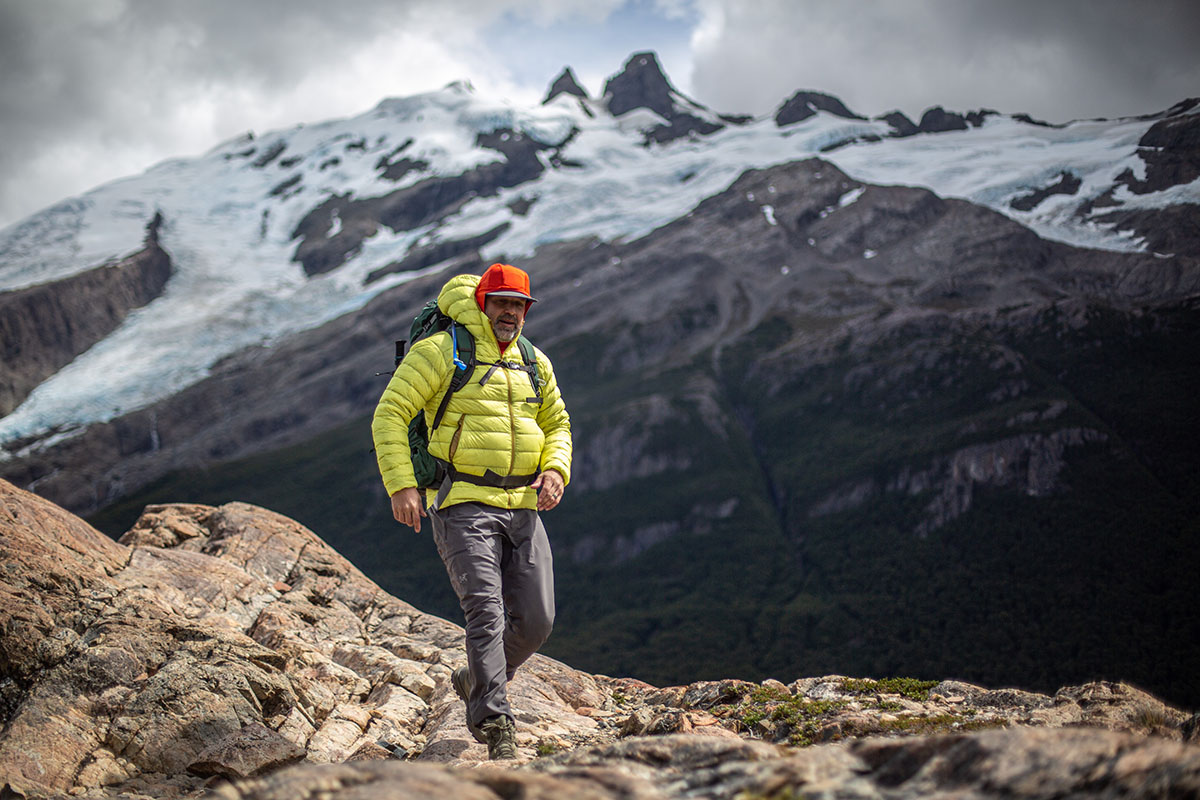
On the flip side, if you want to use your down jacket as a midlayer for winter sports like skiing, you'll then be wearing it underneath a ski jacket or shell. In this instance, the best answer is often to avoid a hood. Wearing a weather-resistant piece over your down jacket means primary head protection is assigned to the outermost jacket, and a hooded midlayer will be left bunched up behind your neck. True, you can double up the hoods, but that’s only really needed in extremely cold and wet environments.
If your preferred down jacket use is casual—mostly around town with the occasional hike—the choice will largely come down to style and comfort. We see performance-oriented down jackets with hoods around our hometowns of Bellingham and Tahoe all the time, but some people opt for more straightforward and cheaper pieces that aren’t as technical and don’t have the hood. The popular non-hooded version of the Patagonia Down Sweater is great for casual use and light adventuring, and you can save even more cash with REI Co-op's 650 Down Jacket.
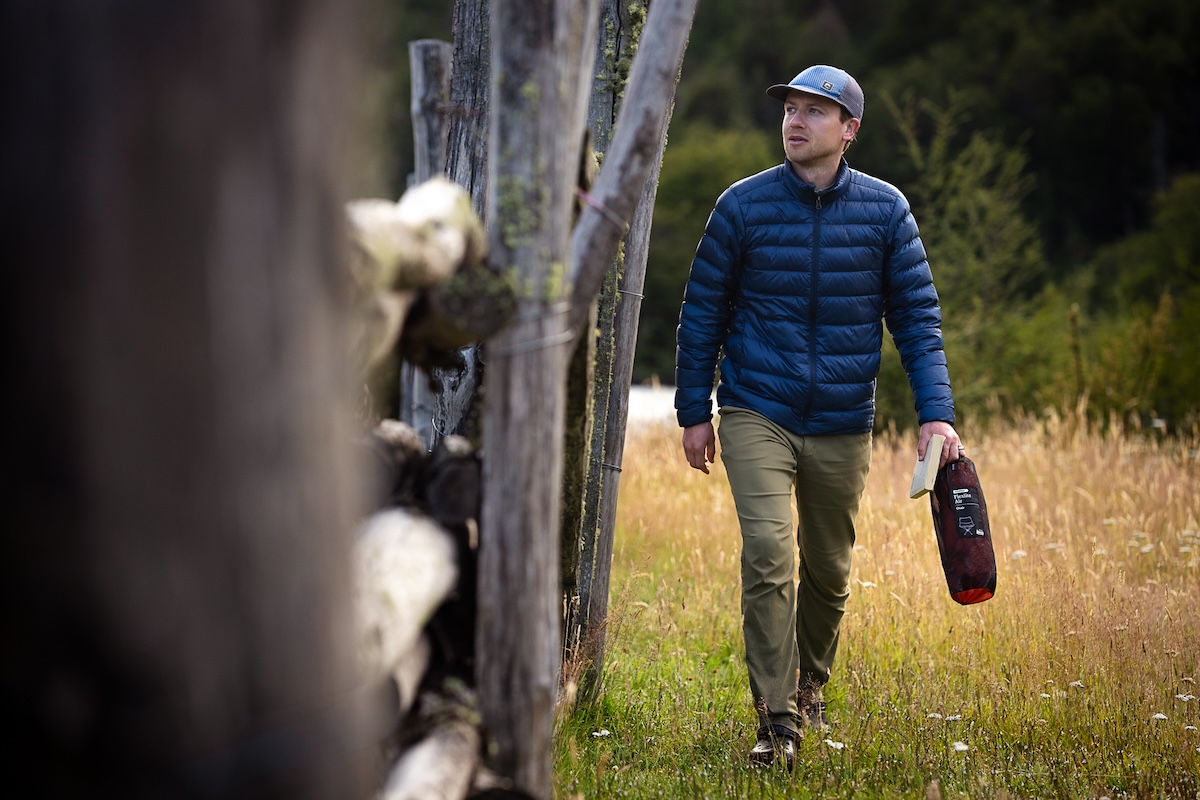
In addition to the factors above, there are weight and cost differences to consider. Below is a quick comparison of three top-selling down jackets with their manufacturer-provided specs:
Patagonia Down Sweater
Hooded: $329 and 14.8 oz.
Non-hooded: $279 and 13.0 oz.
Arc'teryx Cerium
Hooded: $400 and 11.9 oz.
Non-hooded: $380 and 10.6 oz.
Mountain Hardwear Ghost Whisperer/2
Hooded: $360 and 8.8 oz.
Non-hooded: $350 and 8.3 oz.
Based on these three popular down jackets, the price difference between hooded and non-hooded versions range from $10 to $50, and the weight difference is less than two ounces. If you opt for a non-hooded jacket, you will need to buy a beanie (or have already made that investment), and the hat itself will weigh a handful of ounces. For example, one of our favorite hats for hiking and backpacking is the Smartwool Thermal Merino Reversible, which costs $30 and weighs 2.1 ounces. Given the very noticeable jump in warmth and comfort, we prefer a hood for most uses.
.jpg)
If you wind up deciding on a hooded down jacket, don’t make the mistake of assuming that all hoods are the same. To start, a number of climbing and mountaineering companies like Patagonia and Arc’teryx make helmet-compatible hoods that are larger and—you guessed it—fit over most helmets. These are great if you plan on wearing a helmet with your down jacket, but the size and extra material will be slightly heavier than non-helmet-compatible hoods.
In addition, some hoods have rear cinches with drawcords to tighten, while others utilize elastic around the face to fit snugly against your forehead. Hoods that lack adjustability are most often found on superlight performance jackets, and their fit can be hit or miss depending on your head size. They have a distinct, scuba-like look that sits tightly against your head and neck, which makes them a little polarizing (fashion wise) for casual use. Unless you’re trying to trim every last ounce from your jacket, we typically suggest choosing a hood with a rear cinch.
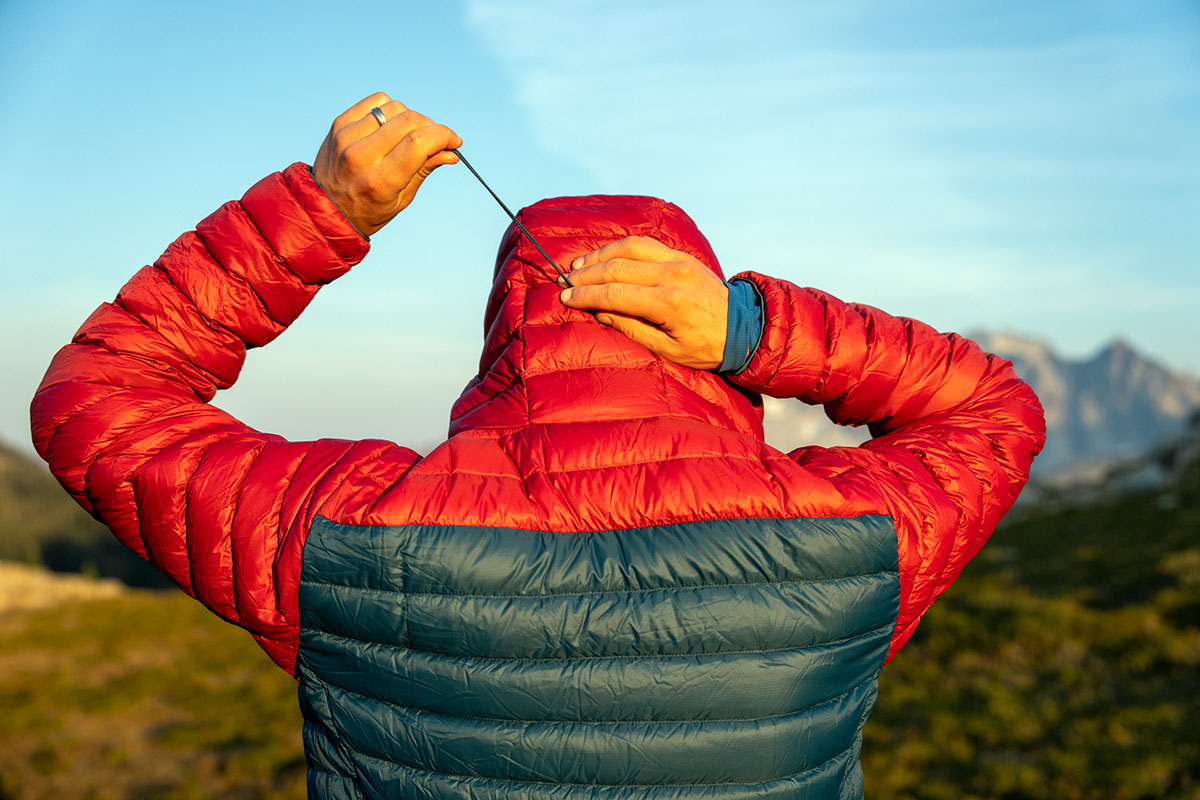
If you’re backpacking, climbing, or even using your down jacket casually, some head coverage will likely be necessary. For years, we brought a beanie along on our hiking trips and broke it out at the end of the day and for sleeping at night. The benefits are simple: It’s a relatively cheap way to keep warm that is super durable, and the low-profile fit won't obstruct your field of vision. As mentioned above, however, a hat is not as warm as a down jacket hood and doesn’t offer neck coverage.
While backpacking on a chilly night that stretched the limits of our sleeping bag, we slept in the Mountain Hardwear Ghost Whisperer/2 Hoody, and the hood was warm and cozy all night. With a beanie, you tend to feel slightly more pressure around your head and ears, the wool or synthetic construction can get itchy, and you sometimes need to make adjustments through the night. In other words, for just about everything but skiing and use as a midlayer, we prefer a hooded down jacket.
Back to Hooded vs. Non Hooded Down Jackets: How To Choose See Our List of the Best Down Jackets